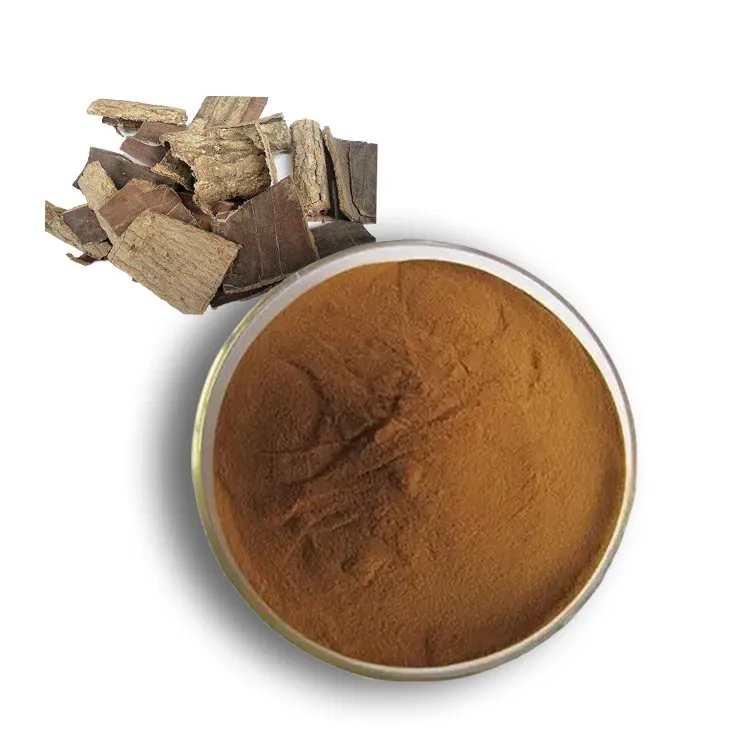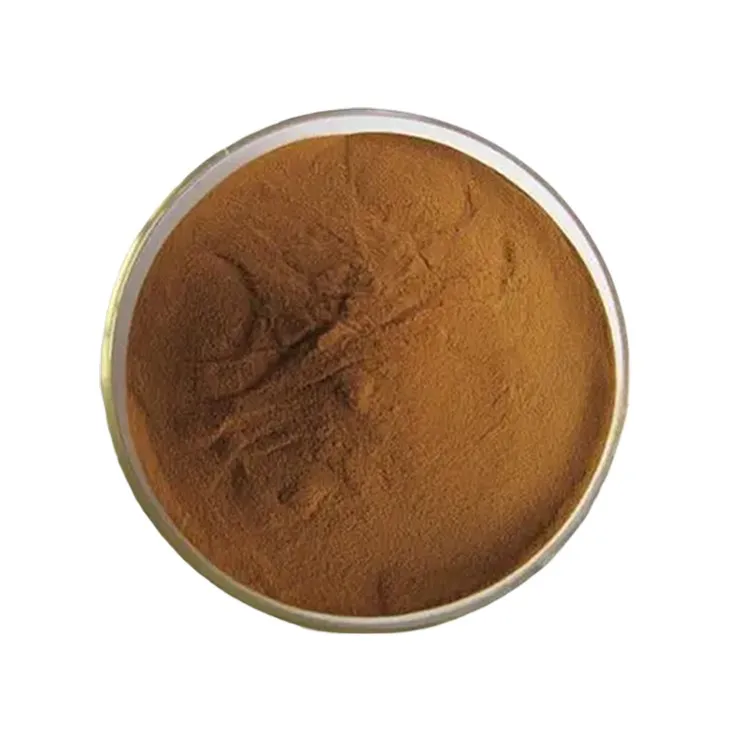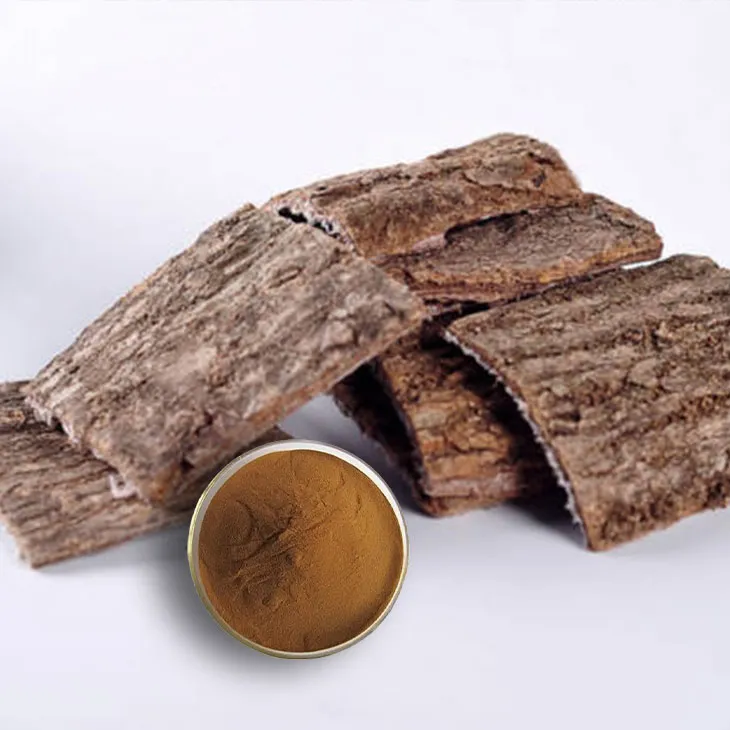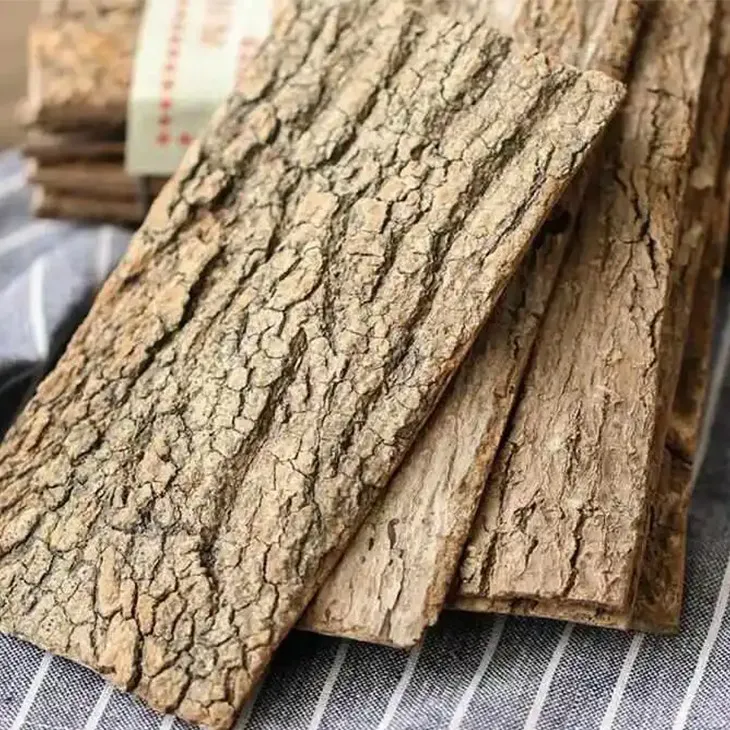- 0086-571-85302990
- sales@greenskybio.com
The process of extracting gutta - percha from Eucommia ulmoides extracts.
2024-11-29

1. Introduction
Eucommia ulmoides is a valuable plant with various beneficial components, and gutta - percha is one of the important substances that can be extracted from it. The extraction process of gutta - percha from Eucommia Ulmoides Extracts is a complex but interesting area of study. This process not only has significance in the utilization of natural resources but also has potential applications in many fields such as medicine, industry, etc.

2. Raw Material Preparation of the Extract
2.1. Selection of Eucommia ulmoides
The first step in raw material preparation is the selection of high - quality Eucommia ulmoides. Healthy and mature plants are preferred. Age and growth conditions play important roles. Generally, plants that have grown for a certain number of years are more likely to contain a sufficient amount of gutta - percha. For example, plants that are 5 - 10 years old are often considered suitable for extraction purposes.
2.2. Harvesting
The proper time for harvesting is crucial. It is usually recommended to harvest during the appropriate season when the content of gutta - percha in the plant is relatively high. After harvesting, the plant parts, such as the bark or leaves (depending on the main source of gutta - percha in the extraction process), need to be properly handled. They should be quickly transported to the processing site to prevent deterioration.
2.3. Pretreatment
Before the extraction process, pretreatment of the harvested materials is necessary. This may include cleaning to remove dirt, debris, and other impurities. Drying is also an important part of pretreatment. Different drying methods can be used, such as natural drying in a well - ventilated area or artificial drying at a controlled temperature. The dried materials are then crushed or ground into a suitable particle size for the subsequent extraction process. This helps to increase the contact area between the raw materials and the extraction solvents or agents.

3. Extraction Techniques
3.1. Mechanical Methods
Mechanical extraction is one of the traditional methods. One common mechanical method is the use of presses.
- Firstly, the pretreated Eucommia ulmoides materials are placed in a press. The press exerts pressure on the materials, squeezing out the gutta - percha - containing fluids. This process is relatively simple, but it may not be able to extract all the gutta - percha effectively.
- Another mechanical approach is grinding with a certain mechanical device. The ground materials are then filtered to separate the gutta - percha from other components. However, mechanical methods generally have limitations in terms of extraction efficiency and purity of the obtained product.
3.2. Chemical Methods
Chemical extraction is more widely used due to its potentially higher extraction efficiency.
- Solvent extraction is a common chemical method. Different solvents can be selected according to the solubility properties of gutta - percha. For example, some organic solvents like hexane or chloroform may be used. The pretreated Eucommia ulmoides materials are soaked in the solvent for a certain period of time. During this process, the gutta - percha dissolves in the solvent, forming a solution. Then, through filtration and separation techniques, the solution containing gutta - percha is obtained.
- Another chemical method involves the use of chemical reagents to break down the cell structure of Eucommia ulmoides and release the gutta - percha. However, when using chemical methods, special attention needs to be paid to the safety of the solvents and reagents used, as well as the environmental impact. After the extraction, proper treatment of the waste solvents and reagents is necessary to avoid pollution.

4. Post - extraction Handling
4.1. Purification
After the extraction, the obtained gutta - percha may still contain impurities. Purification is required to ensure its purity. One common purification method is distillation. If solvent extraction is used, distillation can be carried out to remove the solvent and other volatile impurities. Another purification method is chromatography. Through chromatography techniques, different components can be separated based on their different affinities to the stationary and mobile phases, thus obtaining pure gutta - percha.
4.2. Drying and Solidification
After purification, the gutta - percha is usually in a liquid or semi - liquid state. Drying is necessary to convert it into a solid form. This can be achieved through methods such as vacuum drying or air drying at a controlled temperature. During the drying process, appropriate conditions need to be maintained to prevent the gutta - percha from being damaged or degraded. Once dried, the gutta - percha solidifies and can be further processed or stored for future use.
4.3. Quality Control
Quality control is an important part of post - extraction handling. Various tests are carried out to ensure the quality of the obtained gutta - percha. For example, chemical composition analysis is performed to determine the content of gutta - percha and the presence of any harmful substances. Physical property tests such as melting point determination and viscosity measurement are also carried out to ensure that the gutta - percha meets the requirements for different applications.

5. Conclusion
The process of extracting gutta - percha from Eucommia Ulmoides Extracts involves multiple steps from raw material preparation to extraction techniques and post - extraction handling. Each step has its own importance and challenges. With the continuous development of technology, more efficient and environmentally friendly extraction and handling methods are expected to be developed in the future, which will further promote the utilization of Eucommia ulmoides resources and the application of gutta - percha in various fields.
FAQ:
Question 1: What are the main raw materials needed for preparing Eucommia Ulmoides Extracts for gutta - percha extraction?
The main raw material is, of course, Eucommia ulmoides itself. Usually, parts such as the bark or leaves of Eucommia ulmoides are used. These parts are rich in the substances from which gutta - percha can be extracted. They need to be properly collected, dried, and processed to be suitable for the extraction process.
Question 2: What are the common mechanical methods for extracting gutta - percha from Eucommia ulmoides extracts?
One common mechanical method is grinding. By grinding the Eucommia ulmoides extract into fine particles, it can help release the gutta - percha. Another method could be pressing. Applying pressure to the extract can squeeze out the gutta - percha. However, mechanical methods alone may not achieve very high extraction efficiency and often need to be combined with other techniques.
Question 3: How do chemical methods contribute to the extraction of gutta - percha from Eucommia ulmoides extracts?
Chemical methods can use certain solvents. For example, some organic solvents can dissolve the components surrounding the gutta - percha in the extract, making it easier to separate the gutta - percha. However, the choice of solvent is crucial as it needs to be effective in extraction while also being safe and not causing too much contamination. Chemical reactions can also be used in some cases to modify the structure of the extract slightly to promote the release of gutta - percha.
Question 4: What steps are involved in post - extraction handling to ensure the purity of gutta - percha?
After extraction, filtration is an important step. It can remove solid impurities that may be present in the extracted gutta - percha. Then, purification processes such as distillation or chromatography may be carried out. Distillation can help remove remaining solvents or other volatile impurities, while chromatography can further separate the gutta - percha from any remaining contaminants based on their different chemical properties.
Question 5: How can the usability of the obtained gutta - percha be enhanced during the extraction process?
During the extraction, controlling the extraction conditions such as temperature, time, and the ratio of raw materials to solvents can affect the quality and usability of the gutta - percha. For example, appropriate temperature can ensure that the gutta - percha is not degraded during extraction. Also, proper post - extraction treatment like drying to a suitable moisture content can enhance its usability in various applications.
Related literature
- Study on the Extraction and Application of Eucommia ulmoides Gutta - percha"
- "Advanced Techniques in Eucommia ulmoides Gutta - percha Extraction"
- "The Chemistry behind Eucommia ulmoides Gutta - percha Extraction from Extracts"
- ▶ Hesperidin
- ▶ Citrus Bioflavonoids
- ▶ Plant Extract
- ▶ lycopene
- ▶ Diosmin
- ▶ Grape seed extract
- ▶ Sea buckthorn Juice Powder
- ▶ Fruit Juice Powder
- ▶ Hops Extract
- ▶ Artichoke Extract
- ▶ Mushroom extract
- ▶ Astaxanthin
- ▶ Green Tea Extract
- ▶ Curcumin
- ▶ Horse Chestnut Extract
- ▶ Other Product
- ▶ Boswellia Serrata Extract
- ▶ Resveratrol
- ▶ Marigold Extract
- ▶ Grape Leaf Extract
- ▶ New Product
- ▶ Aminolevulinic acid
- ▶ Cranberry Extract
- ▶ Red Yeast Rice
- ▶ Red Wine Extract
-
Carrageenan Extract Powder
2024-11-29
-
Mulberry Extract
2024-11-29
-
Mango flavored powder
2024-11-29
-
Green Tea Extract
2024-11-29
-
White mustard seed extract
2024-11-29
-
Grape Leaf Extract
2024-11-29
-
Fenugreek Extract Powder
2024-11-29
-
Sugarcane Extract
2024-11-29
-
Astaxanthin
2024-11-29
-
Dan Shen Root Extract/Salvia Root Extract
2024-11-29





















